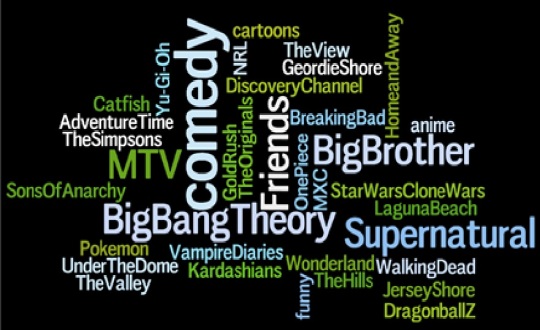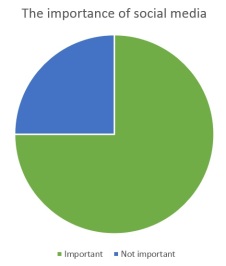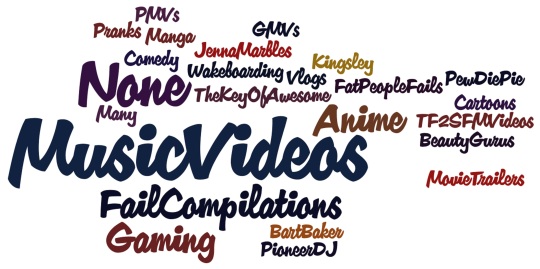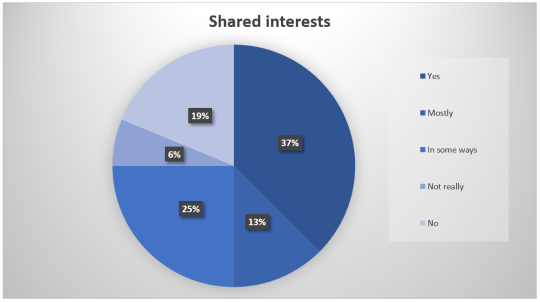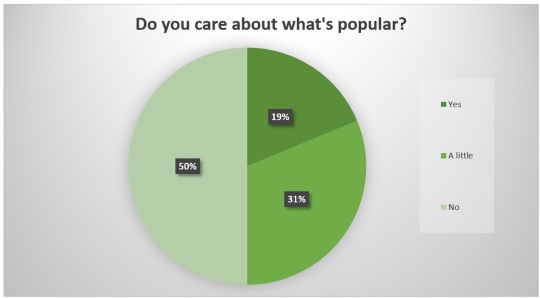I love Time magazine and I subscribe to their Ten Most Popular Stories of the Week email. One of the stories this week seemed relevant to anyone working with young people. Here is a link to the article, What Schools Can Do to Help Boys Succeed by Christina Hoff Sommers. Her three main suggestions are: bring back recess, turn boys into readers, and work with the young male imagination. This may not be groundbreaking advice, but it’s something that we all find a challenge.
The article includes a link to Guys Read (http://guysread.com/), a web-based literacy program for boys founded by author Jon Scieszka, which I’m definitely going to explore.
References
American Enterprise Institute. (2013, October 28). What schools can do to help boys succeed: AEI Top Three [YouTube clip]. Retrieved from http://www.youtube.com/watch?v=x8-F4VRJQsM
Sommers, Christina Hoff. (2013, October 28). What Schools Can Do to Help Boys Succeed. Time magazine. Retrieved from http://ideas.time.com/2013/10/28/what-schools-can-do-to-help-boys-succeed/
Reflecting on my studies of Youth, Popular Culture and Texts, one of the main concepts I’ve come to understand is participatory culture, which has led us to question which skills are necessary to succeed in this new culture. Confronting the Challenges of Participatory Culture: Media Education for the 21st Century by Henry Jenkins et al (2006) discusses the implications of participatory culture for education in school and out-of-school contexts. The report points out the potential benefits of participatory culture and argues that all students need not only access to technology but also opportunities to participate and develop the new media literacies: cultural competencies and social skills developed through collaboration and networking, building on “the foundation of traditional literacy, research skills, technical skills, and critical analysis skills taught in the classroom” (Jenkins et al, 2006, p. 4).
The report identifies eleven core skills necessary for participation in this new media culture. It’s easy for teachers to view this as yet another responsibility added to their already full workload, taking away from their core role of teaching the content of their subjects. I teach English to adult international students, so my initial reaction was that it’s not in my job description to teach media literacies. But isn’t it also part of my job to foster the range of skills and literacies my students need to communicate in English and become active participants in this 21st century culture?
The report (Jenkins et al, 2006, p. 22-55) provides some examples of how these core skills can be developed in formal and informal educational contexts, which I’ve used and adapted to explore ways I could incorporate them into my ESL teaching. Hopefully this will demonstrate how these core skills can be developed in any context, which might give you some inspiration for your own situation.

Retrieved from http://digitallearning.macfound.org/atf/cf/%7B7E45C7E0-A3E0-4B89-AC9C-E807E1B0AE4E%7D/JENKINS_WHITE_PAPER.PDF
Play: Experimenting with your surroundings as a form of problem-solving
Why is play a central feature of early childhood development, but often considered a waste of time for adults? A growing body of evidence points out the potential benefits of gaming and I’m sure many other teachers have been asked by their young adult students, ‘Can we play a game?’ While this may partly be due to their perception of games as more fun and less serious than traditional classwork, there’s no doubt that young people are engaged as they’re drawn into the world of the game, motivated by a goal and developing skills as they play. According to Jenkins et al (2006, p. 23), “play lowers the emotional stakes of failing: players are encouraged to suspend some of the real world consequences of the represented actions, to take risks and learn through trial and error.”
Jenkins et al (2006, p. 24) suggest games and activities that encourage free-form experimentation and open-ended speculation. Here are some of my ideas for incorporating this into ESL teaching:
- Problem solving activities could be incorporated into a variety of lessons.
- Speculation about current, historical and future real-life events could be used in grammar lessons (eg. conditionals, modal verbs for speculation and predictions) and discussions.
- Storytelling activities like fractured fairy tales could promote speculation by modifying traditional stories, analysing stereotyping and conventions. (Some resources: http://www.readwritethink.org/files/resources/interactives/fairytales/; http://teacher.scholastic.com/writewit/mff/fractured_fairy.htm; http://www.thebookchook.com/2013/02/fractured-fairy-tales.html)
- Students could create a ‘Choose Your Own Adventure’ story, speculating what would happen if different choices were made. A film like Sliding Doors could be used to introduce the concept.
- A variety of games can be used to develop communication skills and practise grammar and vocabulary. Many traditional activities can be adapted into games or challenges.
- Students can be encouraged to speculate during pre- and post-reading and listening tasks.
- Students should be encouraged to deduce the meaning of vocabulary from context.

Games Lessons by Maurizio Nazi. (Flickr image, CC BY 2.0, retrieved from http://www.flickr.com/photos/25935380@N05/3994200574/in/set-72157610416025158)
Simulation: Interpreting and constructing dynamic models of real-world processes
Jenkins et al (2006, p. 25) point out the value of learning through direct observation and experimentation, which is now easier than ever thanks to new forms of simulation, which “broaden the kinds of experiences users can have with compelling data, giving us a chance to see and do things that would be impossible in the real world.”
The video games and high-tech simulations described in the report are unlikely to be possible in an English classroom, but I’ve tried to think of ways ESL students could be involved in manipulating and interpreting existing simulations, and creating models of real world processes:
- Simulations – similar to role-plays as students work together on a task, but they don’t adopt an alternative identity
- Business English – simulated business situations (eg. design and market a product and pitch to investors)
- Creating models and charts of real world processes and information, which could be used to practise IELTS Writing Task 1. Hans Rosling’s Gapminder (http://www.gapminder.org/) and TED Talks (http://www.ted.com/speakers/hans_rosling.html) could be useful.
- Design your own game based around a topic of interest/study
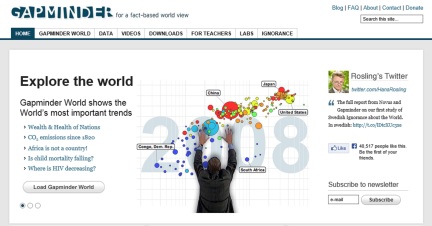
Screenshot of Gapminder website (http://www.gapminder.org/)
Performance: Adopting alternative identities for improvisation and discovery
Role play is an important skill which can be used for a variety of purposes. By putting ourselves in the role of another person, we’re forced to examine our own identity and relationships with others, and rethink our own perspectives and views of the world. Jenkins et al (2006, p. 31) argue that instead of treating role play as “a means to an end – a fun way to introduce other kinds of content,” the skills themselves are actually quite valuable.
Performance can easily be incorporated into ESL classes through:
- Roleplaying – especially useful for practising functional language, cross-cultural understanding and speaking skills
- Use Fakebook to create fake profiles (eg. fictional/historical figures), then role play interviews
- Improvisation – could be introduced by showing TV programs like Thank God You’re Here or Whose Line is it Anyway
- Business English – Epistemic games (Shaffer, as cited in Jenkins et al, 2006, p. 31), which simulate the social context of a profession
- Model UN (http://amunc.net/; http://www.brizmun.org/) could be simulated in the classroom or as a whole-school event with representatives from different classes

FerMUN Model UN Conference by itupictures (Flickr image, CC BY 2.0, retrieved from http://www.flickr.com/photos/42121221@N07/8369709803/in/photolist-dKAX8r-dKDhTk-dKJKZY-dKDgWR-dKDh3x-dKGh1b-dKJHk7-dK6J7B-dKJMaS-dKJLTA-dKAMSe-dKGhdy-dKGfBm-dKGfXC-dKGnF9-dKDhL8-dKDinP-dKGpmo-dKDj7T-dKDgtZ-dKDfp6-dKJHeh-dKAVXg-dKGp2q-dKAPdk-dKAWTc-dKAWnv-dKaLWW-dKAW56-dKJJBs-dKDgf6-dKGgM9-dKJLYj-dKAWWB-dKJMfd-dKDf5c-dKGox7-dKAWeX-dK5iNK-dK6FtV-dKaKUb-dKAUv6-dKDfVg-dKaLuj-dK6tVz-dK6Nxk-dKGh5G-dKDgnH-dKaM37-dKcdTo-dKJJ2C)
Appropriation: Meaningfully sampling and remixing media content
Sampling and remixing existing media content is a major aspect of participatory culture, which may be difficult to accept for educators who emphasise the importance of original, autonomous work. However, Jenkins et al (2006, p. 32-33) point out that all forms of creative expression build on previous works in some way. The main difference is that it’s now so much easier thanks to digitisation and accessibility, which only strengthens the need to discuss the ethical and legal considerations involved in sampling and remixing. Jenkins et al (2006, p. 33) explains that appropriation or sampling provides scaffolding for beginners, allowing them to focus on a few original aspects until they gain the confidence and skills to create their own work. Intelligent appropriation or transformation actually demonstrates analysis and understanding of the content as they take it apart and put it back together.
ESL or English teachers could encourage students to “dissect, transform, sample, or remix existing cultural materials” (Jenkins et al, 2006, p. 33), such as:
- Adaptations from one media format to another
- Adaptations from one genre to another (eg. essay to debate; CV to application letter; letter of complaint to review)
- Modern adaptations of historical stories and literature, such as Baz Luhrmann’s Romeo + Juliet or The Great Gatsby (see my group member Kate G’s blog post about this)
- Fractured fairy tales
- Fan fiction (http://www.fanfiction.net/ could be useful)

Pride and Prejudice and Zombies: The Deluxe Heirloom Edition by Kristin Brenemen (Flickr image, CC BY-NC-ND 2.0, retrieved from http://www.flickr.com/photos/77009411@N00/4247667647/in/photolist-7tmpB6-7tmq5V-7tmZNx-7tqo3s-9wstnq-akXNhB-akXMYa-ap999v-9bumoD-7S2tQN-8zuwFF-8UNDQM-dJft7H-dJkUYf-dJkV37-dJkUTj-dJftfR-8y6aLu-8y3afV-8y39Hr-8y6ard-8y68D7-8y37zv-8y391p-8y3aU8-8y39x8-8y69Uw-8y6beG-8y68Ky-8y38fc-8y3aoK-8y6c4S-8y373K-8y6aW5-8y37HV-8y6a5U-8y3aJH-84HjTC-ab1ULH-gmq512-8WMJVC-8PDYdH-82cdSr-e8Jbcp-9BgSWJ-8L2GPG-7VGRv8-8ePbkr-8X49TP-9Htu7B)
Part 2 coming soon…
Reference
Jenkins, J, Clinton, K., Purushotma, R., Robison, A.J., & Weigel, M. (2006). Confronting the Challenges of Participatory Culture: Media Education for the 21st Century. MacArthur Foundation. Retrieved from http://digitallearning.macfound.org/atf/cf/%7B7E45C7E0-A3E0-4B89-AC9C-E807E1B0AE4E%7D/JENKINS_WHITE_PAPER.PDF
More Information:
Project New Media Literacies: Learning in a Participatory Culture http://www.newmedialiteracies.org/
Teachers’ Strategy Guides http://www.newmedialiteracies.org/teachers-strategy-guide/
Project PLAY (Participatory Culture and You) http://playnml.wikispaces.com/PLAY!
Project New Media Literacies. (2008). The new media literacies [YouTube clip]. Retrieved from http://www.youtube.com/watch?v=pEHcGAsnBZE
I found this great infographic, together with an article by Katie Lepi, on the Edudemic website. I thought it fit in well with the title of my blog, Bridging the Generation Gap. Which generation are you in, and would you agree with the trends it shows?
I’m towards the end of Generation X and I obviously use the internet but I’ve never posted a video of myself. I use Facebook but only for about 5-10 minutes a day. I have a landline but I’ve thought about getting rid of it because my in-laws are basically the only people who ever call us on it. I use my mobile phone much more for texting than calling people. I watch about an hour or two of TV a day but I’m a bit disappointed by the quality of free-to-air TV at the moment. I either have the TV on in the background while I’m doing other things, or sit down and watch programs recorded on the Tivo when I have time. I’ve never been interested in video games, so I can’t understand how my husband can spend hours shooting aliens, although that’s mainly when I’m neglecting him by studying all the time. We watch the news almost every day, but it seems to be getting more and more repetitive and superficial as the TV channels fill their Australian content quota with infotainment and self-promotion of their own shows and products. I used to buy the newspaper on weekends but haven’t bothered lately because I rarely have time to read it all. I love reading fiction but I just don’t have time when I’m teaching and studying. I think that description makes me a fairly typical Gen-X, at least according to the data in this infographic.
Reference
Lepi, Katie. (2013, September 14). How three different generations use the internet [Article & Infographic]. Edudemic. Retrieved from http://www.edudemic.com/kids-of-the-past-vs-today-infographic/
Just in case you’re wondering, yes, you are on the right site. I’ve just changed the design theme of my blog – the Times New Roman in the Koi design was driving me crazy! I hope you like the new look.
As I’ve been teaching international students in their 20s while learning about Youth, Popular Culture and Texts, what’s struck me is that the differences between generations seem to be more about how young people are engaging in popular culture, rather than what they’re engaging with. The content may have changed, but we still have boy bands, pop music, teen soap operas and all of those things that have been traditionally associated with pop culture. The main difference is the technology used and the way young people participate in this culture.
More and more recently, I find myself talking about ‘kids these days,’ a phrase that I never imagined that I’d be using in my mid-30s. Listening to my parents and other older people complain about the younger generation, particularly the perceived deterioration in pop culture, I always wondered whether we all inevitably reach a certain age when we begin to nostalgically treasure everything from our own youth and criticise anything new. Perhaps with the rapid pace of technological and societal change, we can no longer view a generation as a 15 year period. To be honest, I’m glad that I’m part of the generation that grew up without much of this technology, so we picked up the technological skills (some of them, at least) while realising that it’s possible to live without technology.
In particular, I find myself wondering why I’m so disconcerted by young people’s reliance on mobile phones and other forms of technology. During the breaks between classes, my 20-something international students sit around, staring at their mobile phones, with little interaction or communication with each other. They’ve come all the way to Australia and have the opportunity to talk to so many different people, yet they don’t. Why?

Texting Home After Nearly 2 Hours Away by Simon Bramwell (Flickr image, CC BY-NC-ND 2.0, retrieved from http://www.flickr.com/photos/sbramwell/4831831137/)
Firstly, I think young people often use their phones as security blankets. Instead of having to make small talk and risk uncomfortable silences, the pressure’s taken off when they at least appear to be using their phones. For Generation X (like myself) and the older generation, it seems a bit rude and antisocial to use your mobile phone when you’re with other people, but many young people don’t see anything wrong with it. In her TED Talk Connected But Alone, Sherry Turkle (2012) explains that people want to spend time together but keep each other at a distance, in amounts they can control, which she calls the Goldilocks effect. She argues that “we’re designing technologies that will give us the illusion of companionship without the demands of friendship.” By using their mobile phones in these situations, young people can maintain that distance while remaining close enough to have the option of engagement and communication. This might be acceptable if they’re with people from their own generation, but there are plenty of situations in which we need to be able to make small talk, such as mingling and networking with clients at business events. Are young people learning the necessary social and communication skills?
Secondly, there’s an increasing need to feel connected and keep up with the fast pace of information being distributed through the internet and social networking in particular. This would naturally be stronger among young people living abroad, like my students, but I managed to survive several years in Japan in the late 90s without any of this communications technology. In fact, I think I would’ve felt more homesick if I’d been constantly in touch with people at home. The difference is that young people are so used to always being connected that they constantly feel the need to check their phones or computers.
Turkle (2012) explains that people want to spend time together, but at the same time they also want to be connected to all the different places they want to be. The question is whether it’s possible to be in many places and devote your attention to many things at the same time. By engaging with their phones, young people are disengaging from the people right in front of them. Are all those little chunks of connection via phone or internet really worth sacrificing these opportunities for face-to-face communication? In real life, we have to pay attention to the boring bits. Are we raising a generation that simply tunes out if it’s not all about them and their own interests? If so, will employers just have to accept that they’ll never have their employees’ full attention?
Turkle (2012) argues that our mobile phones “are changing our minds and hearts because they offer us three gratifying fantasies. One, that we can put our attention wherever we want it to be; two, that we will always be heard; and three, that we will never have to be alone.” Many people aren’t used to being alone with their thoughts and feelings, so they feel isolated and try to solve the problem by reaching for technology, but Turkle (2012) believes that this attempt at connection is more like a symptom than a cure. In her opinion, solitude and self-reflection are important and we need to teach children how to be alone and entertain themselves. Most importantly, we also need to make time for real conversations.
I think that mobile phones and other forms of technology have transformed our lives in many positive ways which cannot be ignored. However, I can’t help contemplating the question I posed as the title of this post: Does communications technology really encourage communication? What do you think?
Reference
Turkle, S. (2012). Connected, but alone? [Video file]. TED 2012. Retrieved from http://www.ted.com/talks/sherry_turkle_alone_together.html
Other work by Sherry Turkle:
Turkle, S. (2010). Alone together: Why we expect more from technology and less from each other. Retrieved from http://alonetogetherbook.com/
Turkle, S. (2012, April 21). The flight from conversation. New York Times Sunday Review: The Opinion Pages. Retrieved from http://www.nytimes.com/2012/04/22/opinion/sunday/the-flight-from-conversation.html?pagewanted=all&_r=0
Here is a link to a Pinterest board I created to show what’s popular among the Year 10 students I surveyed recently. The survey showed that the teenagers have a variety of interests, which makes it difficult to generalise about what’s popular with ‘kids these days.’ However, these pins give some insight into the diversity of popular culture that these young people engage with. I tried to focus on forms of popular culture that several students mentioned, or those that adults might be less familiar with. I created original pins (until Pinterest wouldn’t let me add more) with a brief description on each one to explain what these popular things are and why they’re popular. For more information, have a look at my Pop Culture Survey and Pop Culture Survey – Extra Information and Links posts.

Screenshot of Pinterest board (http://www.pinterest.com/robynsensei/whats-popular/)
Sixteen Year 10 students at a co-educational private school in Brisbane were surveyed about popular culture. Several students gave very detailed responses to the questions, which provided some insight into the role of popular culture in their lives. The majority of the students gave shorter, less detailed answers, which can be compared to highlight overall trends among this sample group of teenagers.
1. What kind of TV shows do you watch? Why do you like them?
The word cloud below shows the TV shows and genres that students watch. Some students listed many TV shows, while others listed very few. Two students reported watching little or no television.
The students were asked why they liked these TV shows or genres. Most gave short answers with little explanation, but the most common answer was because they were funny (7 students) or because the students were interested in the topic or genre (3 students). Others said they watched the shows because they were bored or too lazy to change the channel.
2. What kind of books or magazines do you read? Why do you like them?
Six out of the sixteen students said they don’t read any books or magazines. At the other end of the spectrum, several students said they love reading and read a variety of types of books. One student (Student A) said she enjoys reading fan fictions because they “are free, don’t take a lot of time to read and sometimes have beautiful writing,” but she also likes fantasy because it “is more immersive.” Another student (Student B), who doesn’t watch TV, prefers news articles because they’re “interesting, worthwhile and informative.” The word cloud below shows the books and magazines that the students reported reading.
3. Do you read more on paper or on screen? Why?
As shown in the pie chart below, the majority (12) of the students spent more time reading on screens such as computers and iPads, most explaining that it was easier and more convenient. One student (Student C) said that paper was boring. In contrast, three students preferred books, saying they were “lovely” (Student D), while another (Student E) said that we need to save bookstores. One student (Student F) said that she reads a lot on both mediums, but probably reads more on paper and loves any excuse to go into a bookstore.
4. Is social media important to you?
Most (12) of the students said that social media was important to them, so they use it regularly. Four students didn’t regard it as important, but three of these students still use some social media such as Facebook. Only one student said she didn’t use any social media.
5. Which social media and websites do you use regularly? Why?
The word cloud below shows the websites and social media that students reported using regularly, most of which involve social media or Web 2.0 technology. The majority of students (12) use Facebook every day to talk to people and stay updated. The second most popular Internet application was Instagram, used regularly by 7 students. YouTube was also popular (5 students), as well as Tumblr (4 students). Ask.fm is used by 3 students and the school has reportedly had problems controlling students’ access to this popular site.
More information about these sites can be found in the post Pop Culture Survey – Extra Information and Links.
Most students didn’t give detailed reasons why they use the sites. One student (Student G) said he was addicted to social media such as Facebook, Instagram, Askfm, YouTube and Dragonvale. Another (Student H) said that websites like Facebook, Tumblr, Instagram, Snapchat and Megashare keep her entertained for hours. Student F also mentioned the entertaining nature of Tumblr, Instagram, Twitter, YouTube, Kik, Wattpad and fan fiction sites, adding that she uses social media to speak to people that she doesn’t see at school. Student A is passionate about art, so she posts her artwork and looks at others on Deviantart, and Tumblr also has a wide range of art sources.
6. What kind of videos do you watch online? Why?
Only three students said they weren’t interested in online videos. Students’ responses to this question varied. The most popular types of online videos were music videos (4 students), anime/cartoons/manga (4 students), and ‘fails’ or ‘fail compilations’ (3 students). Two students watched gaming videos. Other responses include pranks, comedy, vlogs, movie trailers, beauty videos and wakeboarding videos. Few reasons were given for students’ preferences; most said they watched these online videos because they were fun or entertaining.
More information about some of these videos can be found in the post Pop Culture Survey – Extra Information and Links.
7. What kind of things do you share online? Who do you share them with?
Only three students said they don’t share anything online. The majority of students (7) share photographs, while videos (3), reviews (2) and blogs (2) are also common. Most students (7) share this content with their friends on social media. Two students said they share with anyone, and two others said they share with their followers, but it’s unclear how personal the nature of the shared content is. One student (Student A) has an account for the sole purpose of sharing art, fan fiction and content related to art. Another student (Student F) shares photos, blogs, reviews, stories and poetry with her followers and anyone who wants to view them.
8. Do your friends have the same interests as you?
Half of the students said that their friends shared the same (6 students), or mostly the same (2 students), interests. In contrast, three students said they didn’t have the same interests as their friends, and one said they didn’t really have common interests. Four students made comments such as “in some ways” (Student I), “on some things” (Student H), “kind of” (Student J), or “half and half” (Student A).
9. Do you care about what’s popular? Why or why not?
Half of the students (8 students) said they don’t care about what’s popular, while three students answered yes to this question. The other five responses were “half and half” (Student C), “only with some things” (Student H), “kind of” (Student G), “a bit” (Student K), and “not really” (Student A). One student (Student L) said she cares because it’s good to know what’s popular, but she adds that she doesn’t like “mainstream stuff,” although she mentions Keeping up with the Kardashians and One Direction in her answers to other questions.
Although few students explained why they care about popular culture, several students explained why they don’t care about what’s popular. Student A said, “If it’s popular then fair enough, but I will love whatever I find interesting. It doesn’t matter to me if it’s popular or not.” Student F makes similar comments, saying: “I care more about what I like than what other people like.” Student I says she doesn’t like the trends that become popular – they are often overrated. Student B said, “It isn’t important and it’s irrelevant to everyday life and what matters.”
10. What was the last thing that you were a huge fan of? Why did you like it so much? How did you show you were a fan?
TV:
- Klaus (played by Joseph Morgan) from The Originals, a spinoff of the Vampire Diaries (IMDB profile of the TV series: http://www.imdb.com/title/tt2632424/). Student E didn’t really give a reason why she liked the character and the series, but she said she watches it every chance she gets and talks about it.
- The Walking Dead (Official site: http://www.amctv.com/shows/the-walking-dead; IMDB http://www.imdb.com/title/tt1520211/): A TV series about a world overrun by zombies. Student M only said he liked it for the action and showed his enthusiasm on Facebook and by talking about it.
Music:
- Lupe Fiasco (http://www.lupefiasco.com/): Student B said Lupe Fiasco was interesting and thought-provoking, so he bought his albums.
- All Time Low (http://www.alltimelow.com/, https://www.facebook.com/alltimelow): An American pop punk band. Student F said she loves their music and can relate to it. She shows she’s a fan of them by following all of their social media accounts, listening to their music, buying their merchandise and displaying their posters in her room.
- One Direction: Two students said they used to be fans of One Direction, but one of them was probably joking. Student L said that she liked them because they are attractive and good guys.
- Wrecking Ball by Miley Cyrus: Student H said she liked this song and listened to it on her phone, but had no clue why.
Games:
- League of Legends (http://beta.na.leagueoflegends.com/): A fast-paced, competitive online multi-player game in which teams of champions battle head-to-head across multiple battlefields and game modes. Student D said he liked it because it was addictive and challenging, and he supported both the company and the team.
- Team Fortress 2 (http://www.teamfortress.com/): A team-based first-person shooter single or multi-player video game, in which two teams battle in a variety of game modes set in different environments or maps, often with a factory-warehouse theme. It’s available for various platforms such as Xbox 360 and PlayStation. Student A said the game itself looks amazing and the company (Valve) produces quality content. She also said the fan base is friendly and full of amazing artists, so she produces her own fan art and fictions and actively participates in the online community.
- Clash of Clans (http://www.supercell.net/games/view/clash-of-clans): An iOS multi-player strategy video game in which players build a village, train troops and attack others and defend their community. It is a freemium app, which means that the app is free but players can spend real money to advance faster in the game. Two students said they were fans because it was “awesome” (Student N) and “amazing” (Student J).
Online videos:
- PewDiePie (http://www.youtube.com/user/PewDiePie): As mentioned under Question 6, one student (Student O) likes and subscribed to this YouTube channel because it’s “funny as.”
Other:
- Nick Davies (wakeboarder): The same student who mentioned wakeboarding several times (Student P) said he likes wakeboarder Nick Davies and follows him on Facebook because “he is awesome.”
11. What do you consider to be the most popular thing right now? Why do you think it’s so popular?
- Miley Cyrus: “because she is causing a stir” (Student B); “the new Miley Cyrus because she is different” (Student E); criticising Miley Cyrus “because she’s so out there and sexual, even with 12 year old fans” (Student H). [Note: This survey was conducted just a few weeks after the Miley Cyrus VMA twerking controversy.]
- “Probably a boy band, I wouldn’t know. Young teenagers (girls) love boys singing about how beautiful they are, unfortunately” (Student A).
- PewDiePie “because he has the most subscribers on YouTube” (Student L).
- Candy Crush (game) “because it’s addictive” (Student F).
- Facebook and Vine (https://vine.co/ – a mobile app owned by Twitter that allows users to create and post short video clips) because they’re “funny social media” (Student M), yet it’s interesting that Vine wasn’t mentioned by this student or any others in the questions about internet and social media use.
- Certain fashion trends “because when a few people get into it, you are not ‘cool’ unless you do too” (Student I).
- Working out at the gym because “people like to look big” (Student P).
12. What kind of TV shows, books or movies would you like to see more of? Why?
The word cloud below shows many similar titles and genres to those mentioned as responses to earlier questions, showing that most students want to see more of their favourite programs and forms of entertainment. Few students gave reasons for their answers, but Student F said she’d like to see more fan fictions because they’re unheard of to most people. Student I would like to see more fantasy because “it’s fun and interesting to read about a world that doesn’t exist.” The most insightful, original answer came from Student A, who said she “would like to see more that encompass unpopular lifestyles or people (eg. feminist, LBGTQ, African-American, etc.) because it’s not popular amongst producers and writers and has a lot of potential to be an interesting topic in today’s society.”
So what does all this mean?
This survey has shown that there’s no one form of popular culture among young people. The sixteen students surveyed showed both similarities and differences in their preferences for various types of popular culture. Many of the students who said they cared about popular culture and followed trends seemed less willing or able to explain why they engaged with these forms of pop culture in any detail beyond general statements like “it’s funny” or “awesome.” On the other hand, students who tended to follow their specific interests without worrying about what’s popular were more willing or able to explain what they gained from these experiences. This might show that they’ve made a conscious decision not to follow the crowd and can justify their choices, whereas those who follow the crowd do so out of interest but also peer influence. As interesting as this is, I think it was the same when I was at school. What do you think?

Black Sheep 1 by Leon Riskin (Flickr image, CC BY 2.0, retrieved from http://www.flickr.com/photos/69702169@N05/6338272090/in/photolist-aE6ith-7ZCnsQ-7ZCmSS-7ZCn5W-7Zzcdg-7ZzbTB-7ZDo3c-7Zzc4z-bDBRvz-7ZCnds-7ZCngy-7ZCnjf-7ZzbKg-7ZzbH2-7ZzbEx-fpF8U8-8gtjdB-aE6qsQ-dqbTeE-dyXPzB-eHwWH9-eHxfqJ-eHwTfw-eHxaK9-eHqZEx-eYFXh4-eYTc2o-eYT7Td-eYFhvR-eYTgXQ-eYSZ6b-eYT3NJ-eYFwPZ-eYSQY9-eYSLwW-eYTUe9-eYGbXk-eYGjmF-eYTNzU-eHqFH8-eHvrJ5-eHpMMZ-eHwjrQ-eHqbh2-eHpGgB-eHqnHB-eHq67T-eHpZw4-eHvz9h-eHqvdR-eHwNso)
Reference:
Pop Culture Survey conducted in a Year 10 class at a private school in Brisbane, September 17, 2013.
Kinderculture: The Corporate Construction of Childhood (2011) is a collection of essays by various authors, edited by Shirley R. Steinberg, which each address different aspects of the commercialisation and marketing of popular culture to children, as well as the changing notion of childhood. In the introduction to the book, Steinberg (2011) outlines the ideological views of the authors, and explains some of the underlying factors behind this trend. According to Steinberg (2011, p. 1), “Along with a sweeping tsunami of politics, religious influences, struggles, and advancing web 2.0 globalisation comes an incredible phenomenon, kinderculture: Children and youth have become infantalized by popular culture, schools and adults, and while being considered ‘too’ young for almost anything, at the same time, they are being marketed to as seasoned adults.”
Firstly, Steinberg (2011, p. 2-3) points out that the socially constructed notion of childhood has only existed for about 150 years, since children started moving from factories to schools, where they became somewhat sheltered from the dangers of the adult world. Steinberg (2011, p. 4-5) challenges the positivist perspective on childhood, which uses biology to justify assumptions that children should be subservient and dependent on adults due to their physical immaturity. The positivist approach led to a belief that children should only be exposed to developmentally appropriate adult knowledge (Steinberg, 2011, p. 6), an approach which can still be seen in the organisation of the school curriculum as a continuum of experience (Steinberg, 2011, p. 36). According to Steinberg (2011, p. 7-8), “This conception of the child as a passive receiver of adult input and socialization strategies has been replaced by a view of the child as an active agent capable of contributing to the construction of his or her own subjectivity.” Although Kinderculture (Steinberg, 2011) could be criticised for its structuralist approach which emphasises the commodification of cultural objects and the commercialisation of popular culture, this statement shows how it also highlights the agency of children.
The key theme of Kinderculture is that “traditional conceptions of childhood as a time of innocence and adult dependency have been undermined in part by children’s access to popular culture” (Steinberg, 2011, p. 34). The media and popular culture now play a much larger role in children’s lives, opening a door to the adult world and making it harder for adults to control children’s cultural experiences and shape their values and world views (Steinberg, 2011, p. 33). Corporations thus produce more of young people’s experiences, appealing to their desire for independence and entertainment, which naturally makes parents and teachers uneasy. According to Steinberg (2011, p. 13), “in the late twentieth and early twenty-first century, corporate children’s culture has replaced schooling as the producer of the central curriculum of childhood.”
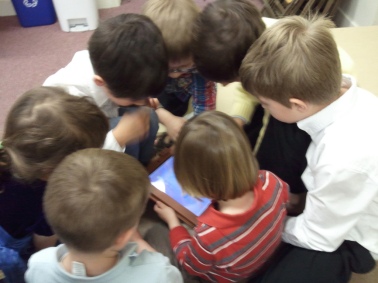
Why iPad (and Tablets in General) Will Succeed by Yan Chi Vinci Chow (Flickr image, CC BY-NC 2.0, retrieved from http://www.flickr.com/photos/14282435@N00/5581238453/in/photolist-9vciKc-8unerx-dGhh3n-adf5Rs-b9wSNz-b9wxYn-b9wHfp-b9wapM-b9wosM-b9wn8i-b9wgzH-b9wTmg-b9wLiM-b9wpfH-b9wRmt-b9wTa4-b9we8T-b9wAEF-b9wX5k-b9wPu6-b9wcZz-b9ww1T-b9wwoM-b9w8wT-b9wPk2-b9wfxp-b9wxaT-b9wXWn-b9wdxD-b9whT4-b9wfhB-b9wpJ4-b9wDTX-b9wVT8-b9wrgr-b9wLvz-b9wG9T-b9wcMV-b9wN8k-b9wwHP-b9wmsT-b9wtkH-b9wv22-cNCt2f-9vciQ4-9vfjn3-9vfjpb-9vfjhG-cFoHN1-czxg1y-cFizYW)
The move away from traditional notions of childhood has implications for schools. “Many children in Western societies are no longer learning along a preplanned program of selected exposure to the adult world by adults. Instead, they are accessing previously considered ‘adult’ information via electronic media. As this takes place, such children are freed from particular parental norms and parental regulations common to bourgeois culture. A cultural aesthetic develops that eschews cultural products provided for the purposes of education and refinement. Kinderculture thus emerges and is produced around the new childhood desire for independence and resistance to things adult. Traditional forms of school learning become less and less important and less applicable to the needs of these children (Hengst, 2001). Thus, childhood is perceived in crisis because it resembles nothing most people have ever seen before.” (Steinberg, 2011, p. 16-17)
Finally, Steinberg (2011, p. 50) outlines implications for education, pointing out the importance of connecting schooling to informal, out-of-school learning. “Our pedagogy for the new childhood moves away from the unproblematized transmission of dominant cultural norms and knowledges toward the development of cognitive skills and abilities that empower students to
- teach themselves to become rigorous scholars
- make sense of the mass of information with which they are confronted in hyperreality
- understand regardless of their social location questions of power and justice
- gain social mobility from marginalized and disempowered locales
- become good citizens, agents of democracy in an antidemocratic era
- make sense of complex real-life situations from which advocates of childhood innocence might try to protect them
- communicate their insights as children unabashedly to a variety of audiences” (Steinberg, 2011, p.49-50)
Although some may argue that the introduction to Kinderculture (Steinberg, 2011) exaggerates and sensationalises the influence of popular culture and commercial interests on young people, I believe that Steinberg (2011) raises some valid points about the way childhood has changed, resulting in conflicting ideas and expectations for young people. Rather than burying our heads in the sand or trying to turn back time, we need to find a way to tap into the potential of popular culture if we want to be involved in “the central curriculum of childhood” (Steinberg, 2011, p. 13).
Reference
Steinberg, S.R. (2011). Kinderculture: Mediating, simulacralizing, and pathologizing the new childhood. In S.R. Steinberg (Ed.), Kinderculture: The corporate construction of childhood (3rd ed.) [EBL version] (pp. 1-53). Westview Press. Retrieved from http://www.qut.eblib.com.au.ezp01.library.qut.edu.au/patron/FullRecord.aspx?p=665864&echo=1&userid=QRgFcBiqbQsbF9HInMEOhg%3d%3d&tstamp=1379670525&id=F4EDC773F4E0FC3A8138C458B9B97613A9C0C7BB

Cover of Steinberg, S.R. (Ed.). (2011). Kinderculture: The corporate construction of childhood (3rd ed.). Westview Press. Retrieved from http://www.qut.eblib.com.au.ezp01.library.qut.edu.au/patron/FullRecord.aspx?p=665864&echo=1
Hi everyone and welcome to my blog about Youth, Popular Culture and Texts. I haven’t spent much time with people under the age of 20 for the last few years and I don’t follow much ‘mainstream’ popular culture myself, so I must admit that I’m learning about the ever-changing world of popular youth culture as I undertake this unit as part of my Master of Education (Teacher-Librarianship). My studies of children’s literature earlier this year encouraged me to expand my knowledge about the texts that young people are engaging with, particularly in the middle grades and young adult literature. Now I’m focusing more on the effect of all kinds of popular culture on young people.
I recently completed an essay on youth engagement with popular culture. Drawing mainly on the work of Johnson (2005) and Fiske (2010), this essay argued that popular culture has always provided various productive pleasures for young people, but its increasing complexity and the rise of engaging new forms of media are transforming the way they think, learn and interact. This has created a divide between what’s valued inside and outside the traditional classroom, both in terms of the content and the cognitive processes and skills involved. Although I don’t believe it’s essential (or even feasible) to include popular culture subject matter in the curriculum, I think that teachers can no longer ignore the increasing influence of technology and new media on every aspect of the lives of young people. We need to consider how we can cultivate similar levels of engagement in the classroom.
Johnson (2005) argues that popular culture has actually become more complex and intellectually demanding over the past thirty years, in a trend he calls the Sleeper Curve. He believes that “the Sleeper Curve is the single most important new force altering the mental development of young people today” (Johnson, 2005, p. 12). Johnson doesn’t claim that the majority of today’s popular culture will one day be revered as masterpieces or classics, but instead that the level of complexity has increased at each end of the quality spectrum, exercising our minds in new ways. Instead of focusing on the text and subject matter, he focuses on the environment which either encourages or discourages cognitive complexity (Johnson, 2005, p. 11). Fiske (2010, p. 113) also emphasises the productive process involved in popular culture, stating that “The question has to shift from ‘What are the people reading?’ to ‘How are they reading it?’” Unfortunately, the subject matter tends to dominate debate about popular culture.
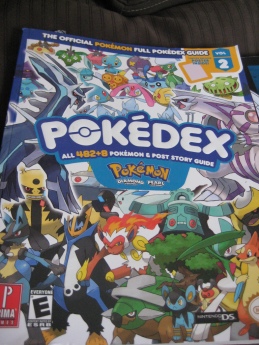
Pokémon Pokedex Guide (Volume 2) by Erik Mallinson (Flickr image, CC BY-NC-SA 2.0, retrieved from http://www.flickr.com/photos/chromatic/943242124/)
Johnson (2005) explains the increasing cognitive demands involved in television, film, video games and the Internet. Many contemporary television programs and some films weave together multiple narrative threads and relationships between a complex network of main characters, with fewer signposts to help audiences follow the storyline (Johnson, 2005). Even the often-criticised genre of reality television challenges our emotional and social intelligence, and encourages participation (Johnson, 2005). While the controversial subject matter of some video games has dominated debate, there’s no doubt that these games capture the attention of young people in unprecedented ways and develop their problem solving and decision making skills, as well as coordination (Johnson, 2005). The Internet has brought a myriad of opportunities for participation and social connection, as well as cognitive challenges due to the rapid development of technology (Johnson, 2005, p. 118). It also provides resources and forums which help people make sense of the increasing complexity of other media.
Contemporary popular culture involves the convergence of different forms of media, providing diverse mental challenges, engagement and productive pleasures for young people, which are just as important as those gained from books. The decline in reading among young people can partly be attributed to the boom in eBooks and reading online, as well as the overall dispersal of leisure time across different forms of media. However, Johnson (2005, p. 185) admits that engagement with long books involving sustained textual argument or narrative without distraction is becoming less common, which is concerning as this type of reading has historically been most valued in education. We have now become more accustomed to dealing with small chunks of text, often with images. This raises several questions: How can we encourage young people to read longer, more detailed texts when they are surrounded by so many multimodal, interactive texts? Should we just accept that this kind of reading is becoming less common as multitasking and skimming become more important in the 21st century? I don’t think so, but I think that we may need to reconsider what’s valued and why.
References
Fiske, J. (2010). Understanding popular culture (2nd ed.). Abingdon, Oxon: Routledge.
Johnson, S. (2005). Everything bad is good for you: How today’s popular culture is actually making us smarter. New York: Riverhead Books.
Johnson, Steven. (2008). How popular culture is making us smarter [YouTube video]. Retrieved from http://www.youtube.com/watch?v=oIyjQ2j_i0w

